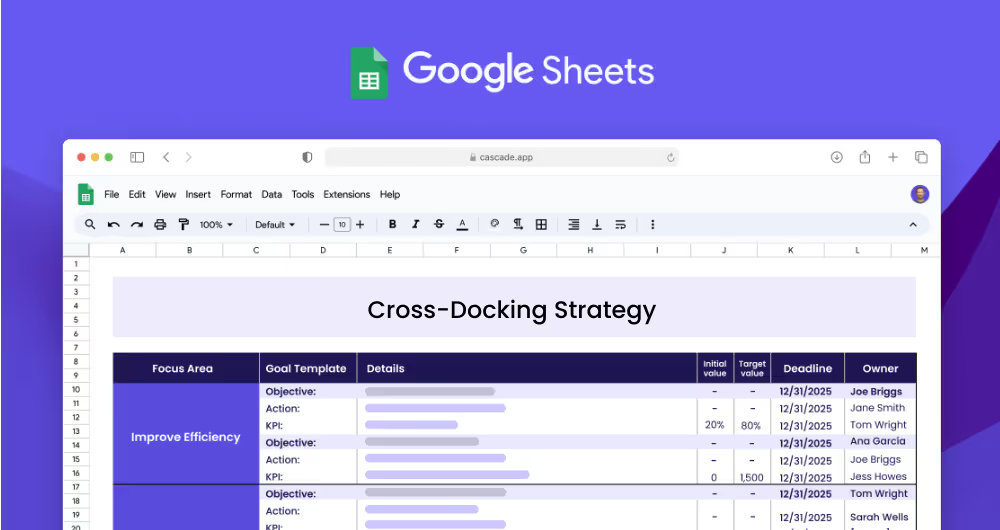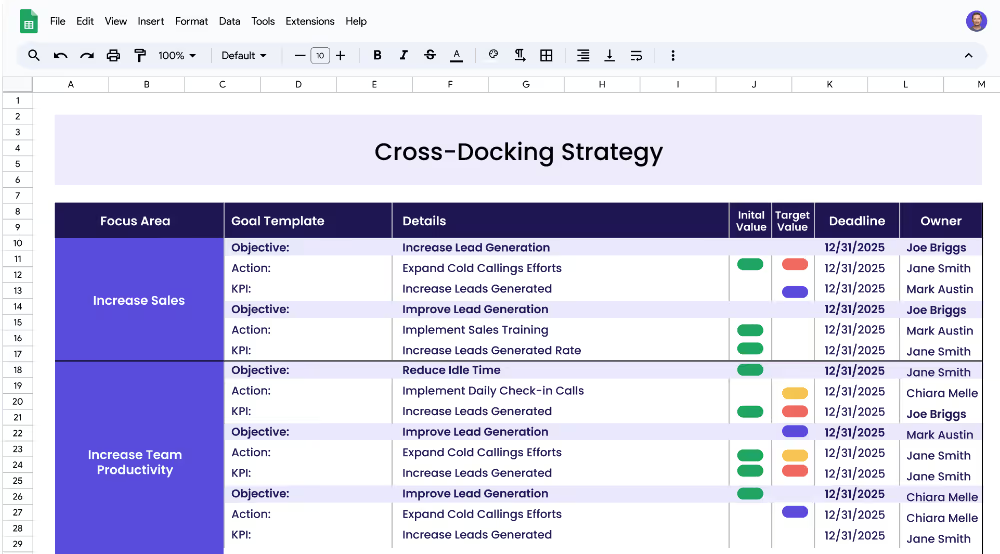A cross-docking strategy is a logistics and distribution approach that optimizes the flow of goods through distribution centers. It involves receiving shipments from suppliers, sorting the items, and then quickly transferring them to the appropriate delivery vehicles. This approach reduces the amount of time required to transport goods and increases the efficiency of the distribution process. Cross-docking strategies are typically used to reduce operational inefficiency, improve inventory management, and increase customer satisfaction.
Each focus area has its own objectives, projects, and KPIs to ensure that the strategy is comprehensive and effective.
This Cross-Docking Strategy Template is designed for logistics and distribution companies that want to develop strategies for cross-docking operations. It provides a framework for setting measurable objectives and targets (KPIs) to tackle those objectives, and for implementing related projects to achieve those KPIs.
The first step in developing a cross-docking strategy is to define clear examples of your focus areas. Focus areas are broad topics or goals that you want to address with your strategy. For example, your focus area could be to reduce operational inefficiency, optimize inventory management, or increase customer satisfaction.
Once you have identified your focus areas, you can begin to think about the objectives that could fall under each one. Objectives are specific, measurable goals that you want to achieve in order to reach your focus area. Examples of some objectives for the focus area of Reduce Operational Inefficiency could be: Decrease Shipping Wait Time, and Optimize Inventory Management.
The next step is to set measurable targets (KPIs) to tackle the objective. KPIs are metrics that you can measure to track your progress toward achieving the objective. An example of a KPI for the focus area of Reduce Operational Inefficiency could be: Decrease avg shipping wait time from 2.2 days to 1.5 days.
Once you have set your KPIs, you can begin to implement related projects to achieve them. Projects are specific actions or activities that you can take to reach your KPIs. For example, if your KPI is to measure the average shipping wait time, you could implement a project to increase cross-docking efficiency.
If you’re ready to accelerate your strategy and see faster results, Cascade Strategy Execution Software is your go-to solution. Leave the limitations of spreadsheets behind and embrace a platform designed to centralize, streamline, and boost the efficiency of your strategic execution. With tools to facilitate real-time updates, automated reporting, and collaborative decision-making, Cascade allows your teams to adapt rapidly and stay aligned with your strategic goals. Sign-up for free or book a demo with one of our strategy experts today!


